| About the " Psycho-suiciders"
About Tatiana Rosenthal's biography
|
|
Links
|
| About
T. Rosenthal's essays
|
| Ich hiess Tatiana Rosenthal |
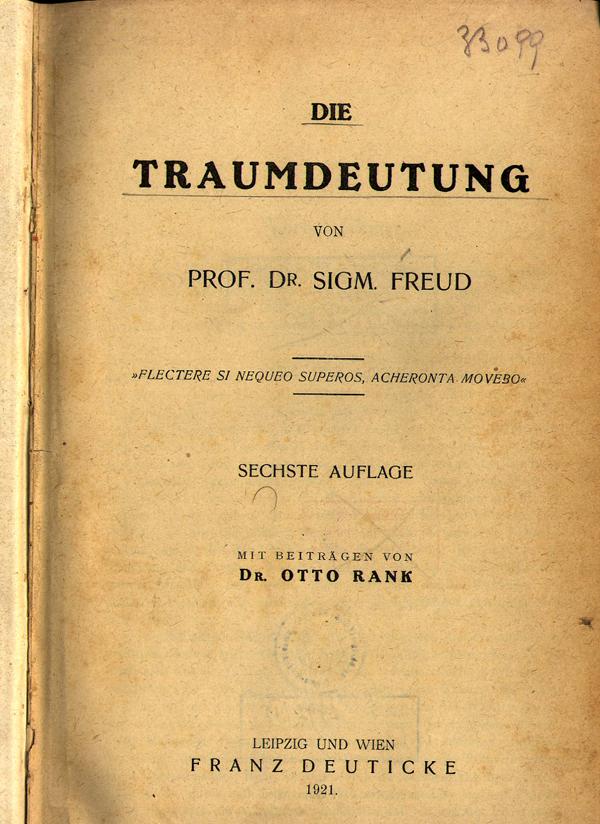
|
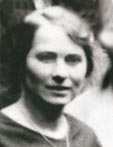 Photo: Sabine Spielrein
Photo: Sabine Spielrein |
|
|
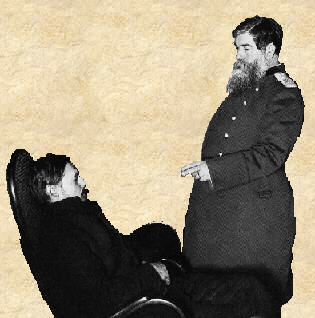 Photo: Bechterev during a hypnosis seance.
Photo: Bechterev during a hypnosis seance. |
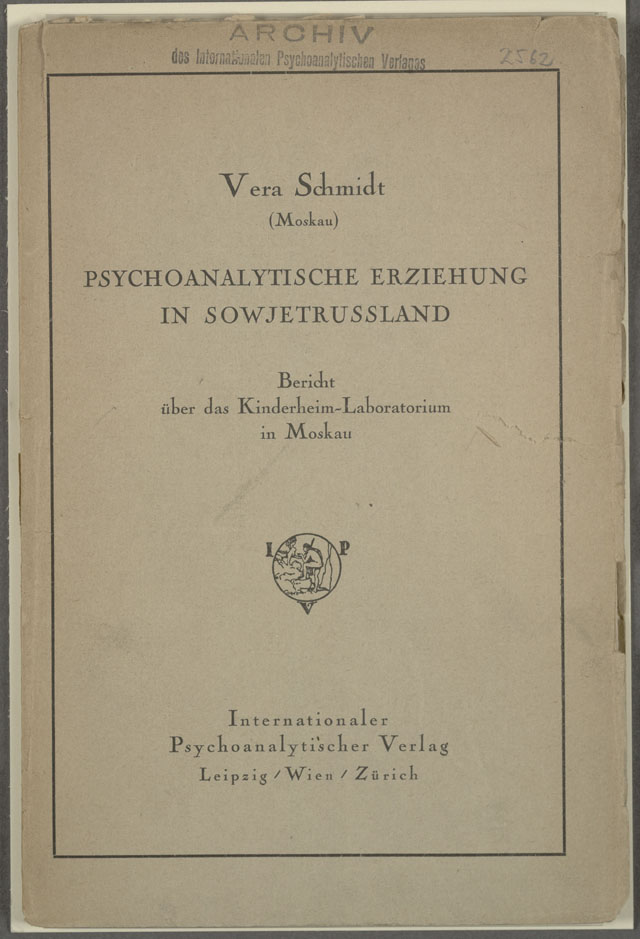 |
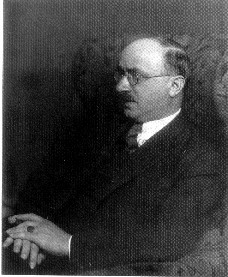 Photo: Max Eitingon
Photo: Max Eitingon
|
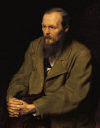 Photo: a portrait of Dostoevsky
Photo: a portrait of Dostoevsky
|
"History of the Unconscious in Soviet
Russia" by Alberto Angelini (in International Journal of
Psycho-analysis, 2008).
|
|||||||||||
| (
Russia was one of the first countries to welcome psychoanalytic ideas, before psychoanalysis was accepted or even known in many Western nations. Furthermore, the notion of the unconscious was already present in the tradition of 19th century Russian philosophers and in the 'objective psychology' school, whose most predominant member was Ivan P. Pavlov. The latter, despite his distance from psychoanalysis, was nevertheless cited by Freud (1905 [1972, p. 176]), as regarding the psychic anticipation of a motor act. Meanwhile another member of the objective psychology school, Vladimir M. Bechterev, through his interpretation of perversions and inversions based on reflexology, attracted the attention of Otto Fenichel (1924). On his part, the 19th century founder of objective psychology, Ivan M. Sechenov, had on several occasions expressed important reflections on the theme of the unconscious. From the beginning of the 20th century, psychoanalytic ideas began to spread in Russia. Only relatively recently have studies on the history of the subject been written (Angelini, 1988, 2002; Etkind, 1993; Miller, 1998). The crucial year is 1908, with three significant events. Firstly, an important psychiatric journal, Psikhoterapiia [Psychotherapy], was launched in Russia, with Vyrubov as its editor. The latter was a psychiatrist who had shown an interest in the suggestive-persuasive method used in Berne by Paul Dubois (1904) and in the Freudian theories which were then starting to appear on the scientific horizon. In the following years, Psikhoterapiia regularly published information on the progress of the psychoanalytic movement, as well as full psychoanalytical articles, including various translations of Freud's writings. Also in 1908, a military doctor from Odessa, A.A. Pevnitskii, held the first conference with a psychoanalytic subject in St Petersburg. Finally, in that same period, the Korsakoff's Journal for Neuropathology and Psychology published two articles by Nikolai J. Osipov (1887-1934). Osipov was to become known in the official history of psychiatry as one of the most important pupils of Bechterev. These articles dealt with Jungian studies on the concept of complex, the associative experiments, and the most recent works of the Freudian school (Osipov 1908, 1909). Osipov had studied in Switzerland and had worked for some time at the Burgh�lzli Hospital in Zurich canton, Jung's workplace. He had met Freud in Western Europe, and in Russia had been a student of Bechterev. He had worked as an assistant in the University Clinic of Moscow under Professor Vladimir P. Serbsky, an open-minded psychiatrist who had not opposed his psychoanalytic interests. Osipov was soon surrounded by young colleagues interested in the therapeutic applications of Freud's ideas. In this same period Osipov organized, with the support of Professor Serbsky, a series of fortnightly meetings, the 'Little Friday Psychiatric Group', in which psychoanalytic topics were discussed. These meetings were attended by physicians and other professionals from related disciplines, such as psychiatry, sociology, and psychology. Osipov, a real pioneer of the psychoanalytic movement in Russia, together with O.B. Feltsmann (who was temporarily interested in Freudian theory), founded in that same period the 'Psychotherapeutic library', a project publishing several Russian editions of Freud's and Jung's works, starting from 1909. Despite their enthusiasm, neither Osipov nor Feltsmann had personally undergone training. Freud himself, in On the history of the psychoanalytic movement (Freud, 1914 [1975, p. 406]) mentions the Russian M. Wulff with these words: 'Only Odessa owns, in the person of M. Wulff, a trained psychoanalyst'. In fact Wulff was the first Russian psychoanalyst to be fully trained, having completed his personal analysis with Karl Abraham in Berlin. Back in Odessa, his native town, he carried out, from 1909, several years of intense analytic work.
On 2 May 1911, Freud informed Ferenczi that he had received, that same day, Doctor Leonid Drosn�s, who had told him that in Russia a psychoanalytic society, based in Moscow, had been formed. Its founders were Osipov, Vyrubov and Drosn �s himself (Jones, 1953). Drosn�s was in fact the doctor who in 1909 in Odessa had consulted the young patient with neurotic episodes later described by Freud in his clinical case of the Wolf-Man (Freud, 1914). Drosn�s had accompanied the young man on his long journey from Odessa to Vienna. Another member of the emerging psychoanalytic society in Moscow was P.A. Ermakov, the new director of the Moscow University clinic, who had replaced Serbsky. The latter had resigned from the organization, together with Osipov, because of political tensions. Between 1912 and 1915 Wulff, Ermakov and Osipov translated into Russian almost the entire works of Freud. Meanwhile, the German journals Zentralblatt, Internationale Zeitschrift f�r Psychoanalyse and Imago published about a dozen Russian contributions. In those same years, other young Russian students had come across psychoanalytical ideas in the course of travels related to their intellectual and political development. Amongst them was Tatiana Rosenthal who, when very young, had emigrated to Zurich and was part of the Bolshevik movement. She had graduated as a doctor in 1911 and, after a period as an active member of the Psychoanalytic Society in Vienna, she went back to Russia after the Revolution. Another woman who had a relevant role in the history of Russian psychoanalysis was Sabina Spielrein. Born in 1885 in Rostov-on-Don, Spielrein was hospitalized at the Burgh�lzli in Zurich, Jung's hospital, between 1904 and 1905, suffering from 'hysteria'. Later, she studied medicine at Zurich University, graduating in 1911 and devoting herself, thereafter, to psychoanalysis. It was Spielrein who, at the meeting of 26 November 1911 of the Vienna Psychoanalytic Society, presented a paper in which she proposed the concept of the death instinct. On that occasion Freud rejected the idea, as he considered it misleading to base explanation of such a concept using biological rather than psychological motives. After a few brief visits to Russia, Spielrein finally returned to her native country after 1923. For many years, the violence of war and, later, of the revolution interrupted all intellectual and scientific connections between Europe and Russia. After a period of confusion and isolation, the psychoanalytic society reconstituted itself in 1921, in Moscow. It only consisted, to begin with, of eight members. Its programme was orientated around the three fields of aesthetics, medicine and pedagogy. We find here names such as Wulff and Ermakov, who, together with A. Bernstein, comprised the first medical group. In 1922 the number of the members had already risen to 15. It included members with a philosophical background and other of various affiliations. The pedagogical current of the Russian psychoanalytic movement found its greatest expression in the person of Vera Schmidt. In 1921 she founded the legendary experiment of the Psychoanalytic School of Moscow. Spielrein too was temporarily part of this project. Among the school-children were Schmidt's child and, according to some witnesses (Faenza, 2003), even Stalin's child. To begin with, this project was in line with the post-revolutionary climate and with the aspiration to create a new kind of human being in a new kind of society. It was hoped that the educators involved in the project would try to understand and interpret the unconscious derivatives of the infantile unconscious and separate them from conscious manifestations. Transference phenomena between children and educators were taken into account, and there was an attempt to create a relationship founded on affection and trust rather than on authority. Furthermore, the educators were also expected to maintain an analytic attitude within themselves.
Punishments were avoided, as well as excessive manifestations of love. In the main, there was an effort to adapt the physical environment to the needs and the age of the children. Children enjoyed maximum freedom of movement and their toilet training was not constrained by any rigid or artificial control. The same level of open-mindedness was shown towards their sexual manifestations and curiosity (Schmidt, 1924). It was probably this latter aspect of Vera Schmidt's pedagogical project that provoked a reaction on the authorities' part. It is an established fact that spiteful accusations of pornography and sexual abuse caused, after various upheavals, the closing down of the Psychoanalytic School in 1924. The Moscow Psychoanalytic Society had met twice (November 1923 and February 1924) in order to discuss the problems of the school, while Schmidt, in 1923, made a journey to Berlin and Vienna to inform the psychoanalytic movement of its existence. Her courageous initiative had been allowed to develop beyond, perhaps, what was imaginable, partly because she enjoyed, in the Soviet world, a solid position. Her husband, Otto Schmidt, a mathematician, was a member of the Soviet of Moscow and of the State Soviet of scientists. He too was a member of the Moscow Psychoanalytic Society and as director of state publications had made materially possible the publication and diffusion of many psychoanalytic writings. The most prominent personality of the Psychoanalytic Society of Moscow in those years was Ermakov, particularly through his commitment to the aesthetics section. His numerous works on aesthetics were to prompt reactions some years later from Lev Vygotsky (1925) and Valentin Voloshinov (1927), whose name is thought by many to be the pseudonym for Mikhail Bakhtin. Both were very interested in psychoanalytic theory. The second section of the Society was the clinical one, directed by Professor Wulff, secretary of the Society and a training analyst. For a while in 1923 he shared this task with Spielrein, who, after brief and intermittent visits to her country, had finally left Switzerland and returned to Russia. Spielrein had founded, in Lausanne in 1919, a psychoanalytic study group called 'Cercle Interne' [inner circle]. For over a year, she lived in the Student Residence, in the centre of Moscow, with her husband Pavel Scheftel, a physician, and their daughter Renata. In 1925, after the birth of her second daughter Eva, Spielrein moved to her home town, Rostov, where she specialized in the psychoanalysis of children. The last of her works to appear in Western Europe was published by Imago (Spielrein, 1931). She and her two daughters died during the German invasion of Rostov in 1942. Another significant female character within Russian psychoanalysis was Tatiana Rosenthal, a follower of the Bolsheviks, who had taken part in the revolutionary movement. Rosenthal, in 1919, had participated in setting up a psychoanalytic clinic in the new Institute of Brain Pathology based in St Petersburg, formerly the Neurology Department, of the Military Academy, each in turn directed by the eminent scientist, Vladimir Bechterev. In 1922, Ermakov and Wulff founded a State Psychoanalytic Institute. To begin with, this incorporated the psychoanalytic school in which Vera Schmidt was involved. Later, it opened a psychoanalytic clinic directed by Wulff. The Russian Psychoanalytic Institute was, after those of Berlin and Vienna, the main centre of psychoanalytic training and activity. In 1924, this Institute proposed a programme of 10 seminars and organized supplementary courses at Moscow University and at the Psychiatric Clinic. Ermakov himself, launched, in Moscow, the publication of a series called The Psychological and Psychoanalytical Library, which appeared until 1929 (Vasilyeva, 2000). As well as finding a home within the Moscow Psychoanalytic Society and its programmes, Freudian ideas were met with interest by many scholars. Under the impetus of the revolutionary movement, they welcomed psychoanalytic theories as an innovative methodology with implications for many disciplines, such as sociology, law and criminology. Obviously the term 'psychoanalysis' had a different meaning from its use today. Rooted in various, fundamentally philosophical disciplines, psychoanalytical thought was totally divorced from clinical practice. Some of these scholars were also part of the Moscow Society. However, historically and methodologically, they are best characterized as attempting to put psychoanalytical ideas to use in reinforcing the Marxist and Soviet perspective within their particular discipline. Some of them worked at the State Institute of Experimental Psychology in Moscow, while others were prominent, historically important figures from other fields. This is the case, for instance, with Pavel P. Blonskij, who appears in the list of Moscow psychoanalysts published in 1922 in the Internationale Zeitschrift f�r Psychoanalyse. In the period in which psychoanalysis gained his attention, Blonskij, a Bolshevik, was professor in the Second State University of Moscow, at the Krupskaia Academy for Communist Education, and in various other pedagogical institutes. He was the founder of paedology, a discipline that is to pedagogy, he said, as botany is to gardening. His intention was to found a new pedagogy capable of educating a self-aware and active 'new man', an idea strongly resonant with the developing Soviet world. Psychoanalysis was considered reinforcement for his theory of psychic development. Another member of the Moscow Psychoanalytic Society was Mikhail A. Reisner, a jurist and professor of law. Engaged in the People Commissariat of Justice, he tried to use psychoanalysis to establish links between the psychologies of individual and mass behaviour, and he was the precursor of some ideas that would later be explored by Otto Fenichel and the Frankfurt School (Angelini, 1996; Etkind, 1993). The work of B.D. Fridman is situated in philosophically similar ground. Fridman, who was for some time active in the Psychoanalytic School of Moscow, tried to explain the underlying mechanisms in the formation of social ideologies, equating them, fundamentally, with the psychoanalytic concept of rationalization. An even more philosophical line was taken by Bernard E. Bychovskij, who tried to link psychoanalysis to the energetist philosophy being expressed in those years by the German chemist-physicist Wilhelm Ostwald, winner of the Nobel Prize for Chemistry in 1909. Historically, some connections have been made between psychoanalytic ideas and those of W. Ostwald (Angelini, 1985; Dimitrov, 1971), even though Freud never expressed openly any adhesion to Ostwaldian theory. Finally, Aron B. Zalkind, also listed as a member of the Moscow Society tried to produce a wide transformation of psychoanalysis, translating it - and distorting it considerably - into the terms of reflex theory elaborated by Ivan Pavlov.
Generally speaking, the concept of psychoanalysis proposed by these scholars was not only divorced from the clinical field, practice being virtually impossible in the prevailing political context, but was often forced and ideologically biased. However, psychoanalytical ideas, with their innovative power, did become widespread, and were not restricted to Moscow.
In those same years individuals or small groups interested in Freudian thought appeared in various other Russian localities. Information on these more peripheral activities is, however, limited. It is well known that in Kiev, apart from Zalkind who was a resident, there were active figures such as Vinogradov, Goldovskij and Hackebusch, the director of the University Clinic. As for Odessa, we know of two physicians, Chaletzky and Kogan, who promoted psychoanalytic concepts. In Leningrad, all psychoanalytic activity ceased in 1921 when Tatiana Rosenthal, who had established herself there, committed suicide. She was 36. Her colleague Leonid Drosn�s, also active in Leningrad, then moved back to Odessa, his home town. One of the most significant psychoanalytic centres, after Moscow, was that of Kazan in the Tartar Republic. It became a Psychoanalytic Society in 1922 on the initiative of a young psychologist, who was to become known in Western Europe as one of the fathers of contemporary neuropsychology: Aleksandr Romanovic Luria. He had previously described his project to Freud, who, when answering his letter, greeted him with 'Sehr geehrter Herr Pr�sident' [Dear Mr President]. Luria's psychoanalytic activity, first in Kazan and then in Moscow, where he had settled in the autumn of 1923, is shown by his numerous contributions to the Internationale Zeitschrift f�r Psychoanalyse (Luria, 1924, 1926, 1927). This work includes accounts of the general principles of Freudian thought, descriptions of the characteristics of anxiety, an analysis of a piece of theatre, and various other topics. From an historical perspective, Luria also belongs to that group of young Russian academics who arrived at psychoanalysis through the impetus of Marxist historical materialism. This is shown, in particular, in Luria's essay, Psychoanalysis as a system of monistic psychology (Luria, 1925). Despite his laborious and problematic input of ideology, Luria's great merit was that he understood and emphasized the epistemological power of psychoanalysis, giving it the ability to develop an overall approach to the human personality, thus overcoming the limits of 19th century experimental psychology. The latter was at the time the object of fierce debate, taking place also at the philosophical level. In the list of the psychoanalysts belonging to the Moscow Society and reported in the Internationale Zeitschrift f�r Psychoanalyse, there also appears the name of one of the most prominent personalities of 20th century psychology: Lev Semenovic Vygotsky, founder of the historical-cultural psychology school. According to the reports of the above journal, Vygotsky presented at least two papers to the Society: one reviewed by Luria (1924), related to the relationship between psychoanalysis and literature, and the other, reported by V. Schmidt, to the aesthetics strand in Freud's work (Schmidt, 1924, 1927). Furthermore, in 1925, he wrote, in collaboration with Luria, a brief introduction to the Russian translation of Beyond the Pleasure Principle (Freud, 1920; Vygotsky and Luria, 1925). In this work he expresses various positive opinions towards Freudian ideas, although interspersed with many criticisms, especially towards the concept of the death instinct. In truth, Vygotsky, unlike his other colleagues, never fully accepted psychoanalysis, not even briefly. He did however engage with the theory, though in a limited way. His critical attitude towards Freudian thought was revealed even when he dealt with the problem of psychic, unconscious phenomena in Psikhika, soznanie i bessoznatel'noe [Mind, consciousnss and the unconscious] (Vygotsky, 1930). In this work he acknowledged the methodological importance of psychoanalysis, particularly its denial of the dichotomy, characteristic of 20th century thought, between psychological and physical processes. However, he expressed some worries about Freudian psychic determinism and voiced concerns that it might open the way to biologization. In fact, Vygotsky, the theorist of consciousness as an historical-social phenomenon, did not deal with the unconscious in a systematic way, but accepted it as a given, thus opposing those who identified consciousness with the psychic in a reductive way. At any rate, the huge reach of Vygotskian conceptions, in the second half of the twentieth century, has produced many ideas which have also interested psychoanalytic theory. Without being overly detailed, it is worth remembering that the historiography of psychoanalysis possesses a growing literature that aims to understand possible points of contact between psychoanalytic thought and historical-cultural theory. These reflections have begun to have their impact on psychoanalytic theory. James Wertsch, an author interested in psychoanalysis (1985, 1991, 1998), has developed Vygotskian ideas, studying the idea of the regulation of human behaviour through language, signs and other cultural artefacts. Wertsch (1990) has also attempted, using a psychological perspective, to make a cautious link between Vygotsky and psychoanalysis, emphasizing in particular the interaction and the exchange of meanings between the child and the adult. This can be witnessed in the special issue of Contemporary Psychoanalysis, which is entirely dedicated to the relationship between the great Russian scholar and psychoanalytic thought. In that issue, other authors, closer to psychoanalysis, offer a variety of reflections on the relationship, even suggesting, as did Tanzer (1990), that, in the wider context of G.H. Mead's writings, it is possible to make an analogy between Vygotsky's thought and that of H.S. Sullivan.
Subsequently, in the Journal of the American Psychoanalytic Association, Wilson and Weinstein (1992a, 1992b) wrote a detailed study, including a clinical perspective, on the Vygotskian view of the acquisition of language. In this article different aspects of the unconscious dimension are taken into account, such as phantasies, identifications and defensive mechanisms. In 1996, these same authors, proposed a link between the concept of 'Zone of Proximal Development' (ZPD), elaborated by Vygotsky in the context of his child studies and the notion of transference (Wilson and Weinstein, 1996). We should realize that, within the academic field of psychology, beginning in the 1980s, there has been a wide and systematic growth of Vygotskian themes. This new interest was caused by the publication in English, in 1978, of an anthology of various writings by Vygotsky, Mind and Society (Vygotsky, 1978). Since then, following this trend, numerous psychologists have highlighted the close relationship between the environmental context, emotions and development (Bruner, 1990; Cole, 1990; Shweder, 1990; Valsiner, 1995). These studies, which explore the relation between individuals and their socio-cultural environment, have urgent and important methodological problems which produce conflicting theoretical positions. Within psychology, an open attitude (Cole, Engestrom and Vasquez, 1997), inclined to methodological pluralism and interdisciplinarity (Cole, 1998; Rogoff, 2003) has up to now predominated. In this study, however, which constructs a historical context to psychoanalytic thought, actual psychological theory - and thus its methodological themes - cannot be described in any depth. As far as history is concerned, the fact is that, at the start of the 20th century, Russian psychological and philosophical thought was substantially influenced by Freudian ideas. However, while on the one hand psychoanalytical theories moved into wide areas within Soviet culture, they were, from the 1920s, the target of strong criticisms. These criticisms, philosophical in nature, arose because of the relation of psychoanalytic theory to Marxism and are linked to a complex intern ational situatio Psychoanalytic conceptions were often used to support critical revisions of Marxism, especially in Austria and Germany. The Soviet orthodox Marxist philosophers vehemently attacked the 'Austro-Marxist revisionists', condemning at the same time almost all the theories that the latter had supported, including psychoanalysis. It can be said that these attacks came from the faction engaged in the fight against Trotskyism in the scientific field. This extremist faction criticized and banned from the Soviet cultural horizon most of modern science's developments, including Einstein's relativity theory, Planck's quantum theory and modern biology. The attack on psychoanalytic conceptions and on numerous psychological theories carried on for years and culminated, after psychoanalysis had been eliminated, with the Central Committee of the Communist Party formalizing, on 4 July 1936 a 'severe criticism' of any 'anti-scientific and bourgeois principle'. As a result, psychoanalysis, as well as Blonskij's ideas, and the historical-cultural concepts of Vygotsky disappeared from the landscape of Soviet Russian psychology. In a society which was restructuring itself on authoritarian lines, and which only allowed a single set of ideas, one could not expect the survival of initiatives based on psychoanalytical ideas, such as Vera Schmidt's school. Psychoanalysts disappeared from the scene. Some of them emigrated; others, like Tatiana Rosenthal, came to a tragic end. From the second half of the 1930s Soviet repression became so violent and allencompassing that it struck not only the psychoanalytic movement, but even its adversaries. In other words, the concept of the unconscious could not be mentioned, not even in criticism. From that point, the whole of Soviet psychology remained, until after the Second World War, substantially confined within the context of Pavlovian physiology. However, within this general context, there were some researchers who, although distant from Freudian thought, stepped outside the Pavlovian framework. They laid the basis for the re-emergence of those repressed concepts, belonging to both the scientific and the affective spheres, which were going to find some formal space only in the second half of the 20th century. |
|||||||||||
|
|
|||||||||||
|
|
|||||||||||
|
|
|||||||||||
|
|
|||||||||||

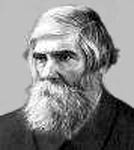 Photo: V. M. Bechterev
Photo: V. M. Bechterev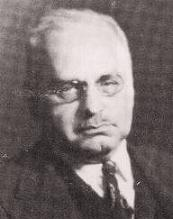 Photo: A. Adler
Photo: A. Adler